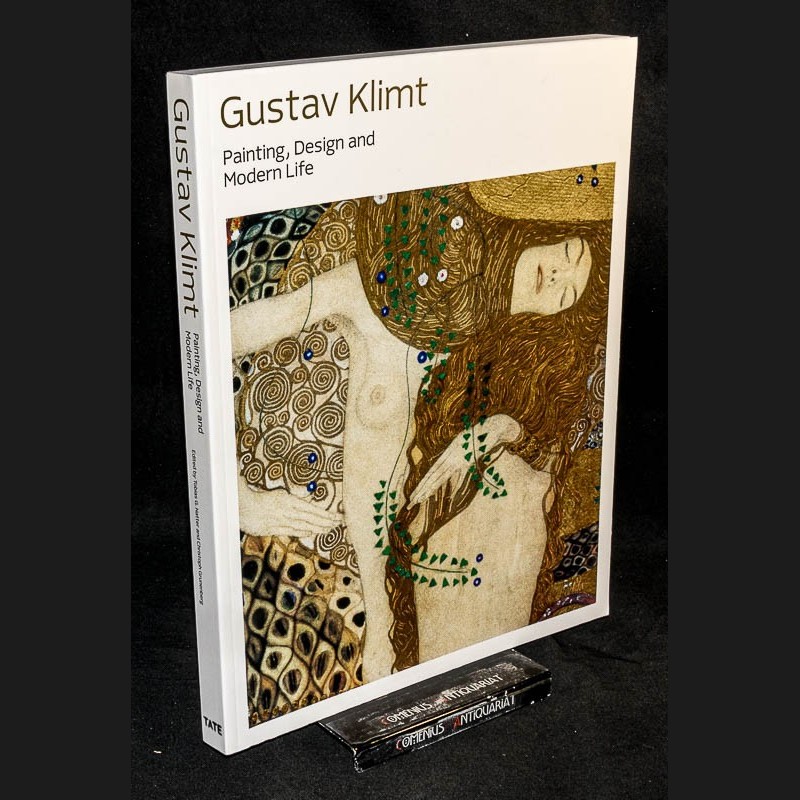Natter, Tobias G. and Christoph Grunenberg [ed.],
Gustav Klimt Painting, design, and modern life. London: Tate Pub., 2008. 255 Seiten mit Abbildungen und Register. Broschur. 4to. 1376 g
* Published on the occasion of the exhibition at the Tate Liverpool, 30 May 31 August 2008.
Bestell-Nr.157410
Natter Grunenberg |
Malerei |
Kunstausstellung |
Ausstellungskatalog |
Exhibition Catalogue |
Design
Gustav Klimt (1862-1918) remains one of the most popular and influential artists of the modern period. His ornate, sensual paintings, often charged with eroticism and embellished with gold, have been endlessly reproduced and are familiar to many who know little of the artist who created them. Gustav Klimt: Painting, Design and Modern Life explores the life and work of this unique and intriguing figure, who was at the epicentre of the cultural renaissance that swept Vienna at the turn of the last century. Klimt played a critical role in the foundation and leadership of the Viennese Secession, a progressive group of artists and artisans driven by a desire for innovation and renewal. The philosophy of the Secession embraced art, architecture, fashion, furniture, jewellery and interior design, producing some of the most radical works of the twentieth century, transcending the traditional separation between the different arts. Central to the book is the relationship between Klimt as artist and leader of the Viennese Secession and the philosophy of the Wiener Werkstatte (the Viennese Workshop, 1903-32), a highpoint of modern design and architecture. The architect and designer Josef Hoffmann, Klimt's close friend, collaborator and founder of the Wiener Werkstatte, produced the extravagant interiors for Klimt's patrons and collectors, creating a world of both luxurious opulence and refined simplicity. This lavishly illustrated book is a fittingly sumptuous tribute to the achievement of an extraordinary artistic innovator and to the idea of the total work of art.
Contents
Sponsor's Foreword
Foreword
Acknowledgements
Gustav Klimt: No More Than a Goldsmith?
Tobias G. Natter
Gesamtkunstwerk, or the Politics of Wholeness
Esther da Costa Meyer
Luxury and Degradation: Staging Klimt
Christoph Grunenberg
Sex, Lies and Decoration: Adolf Loos and Gustav Klimt
Beatriz Colomina
'Austrian Art' on the Move: The Cultural Politics of International Exhibiting 1900-1918
Elizabeth Clegg
1 The Foundation of the Viennese Secession
2 The Beethoven Frieze
3 The Wiener Werkstätte
4 Fritz and Lili Waerndorfer
5 The Villa Henneberg
6 The Gallia Apartment
7 Karl Wittgenstein and the Wittgenstein Family
8 Eugenia and Otto Primavesi
9 The Artist's Studio: Gustav Klimt and Egon Schiele
10 Gustav Klimt and Landscape
11 The World in Female Form
Chronology
Notes
Select Bibliography
Exhibited Works
Lenders and Credits
Index






 Datenschutz
Datenschutz
 Versandkosten
Versandkosten
 Google Mail
Google Mail
